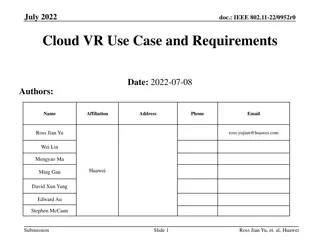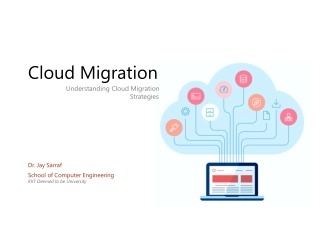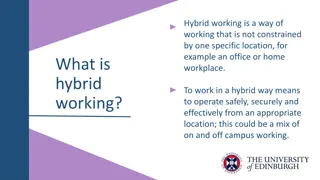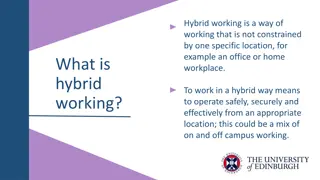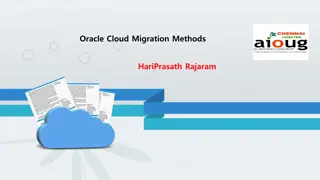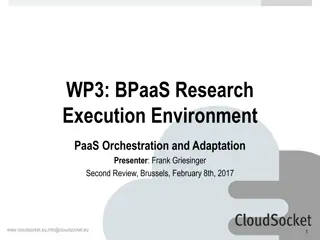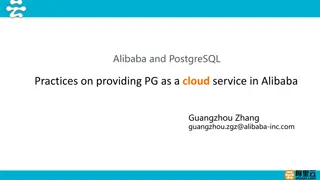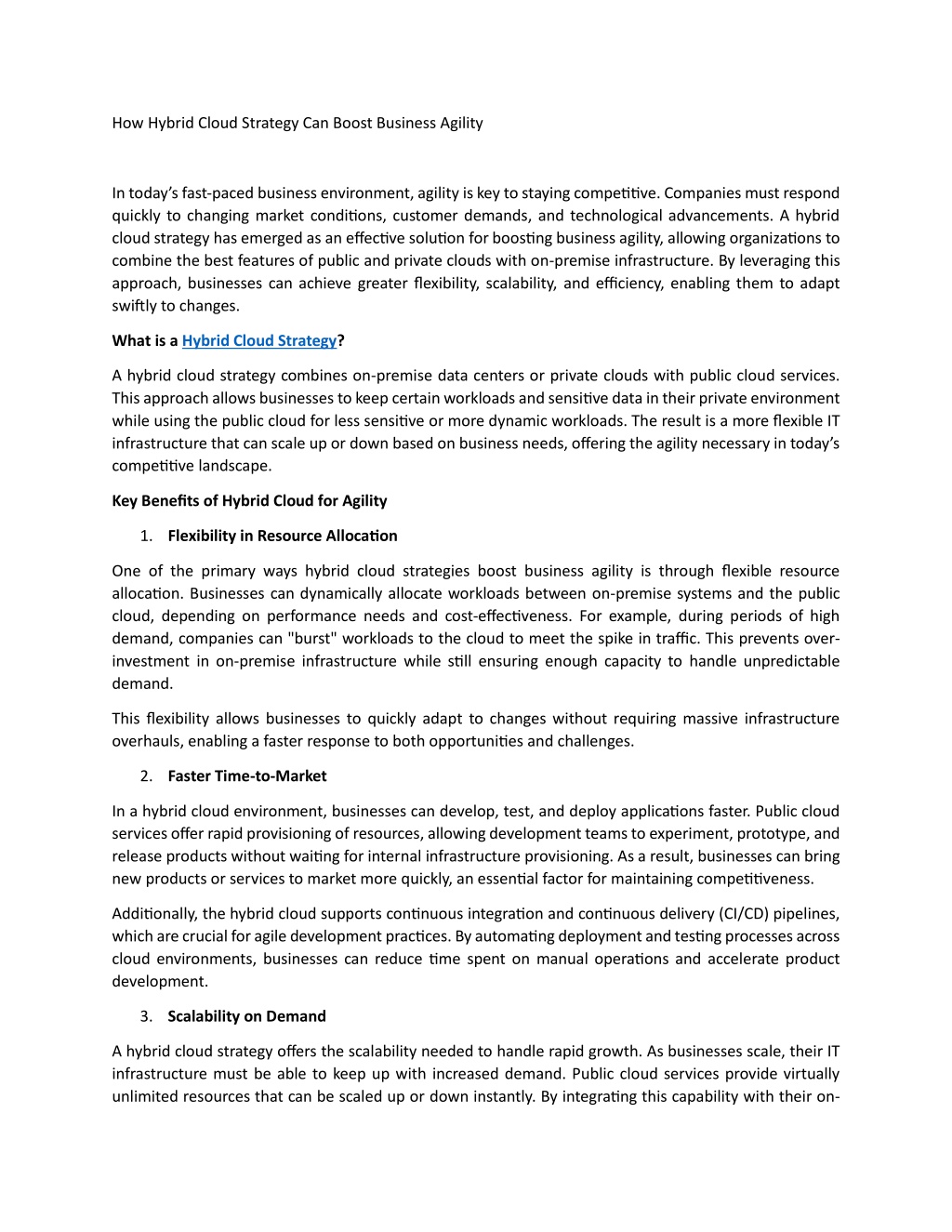
How Hybrid Cloud Strategy Can Boost Business Agility
A hybrid cloud strategy has emerged as an effective solution for boosting business agility, allowing organizations to combine the best features of public and private clouds with on-premise infrastructure.
Download Presentation

Please find below an Image/Link to download the presentation.
The content on the website is provided AS IS for your information and personal use only. It may not be sold, licensed, or shared on other websites without obtaining consent from the author. Download presentation by click this link. If you encounter any issues during the download, it is possible that the publisher has removed the file from their server.
E N D
Presentation Transcript
How Hybrid Cloud Strategy Can Boost Business Agility In today s fast-paced business environment, agility is key to staying competitive. Companies must respond quickly to changing market conditions, customer demands, and technological advancements. A hybrid cloud strategy has emerged as an effective solution for boosting business agility, allowing organizations to combine the best features of public and private clouds with on-premise infrastructure. By leveraging this approach, businesses can achieve greater flexibility, scalability, and efficiency, enabling them to adapt swiftly to changes. What is a Hybrid Cloud Strategy? A hybrid cloud strategy combines on-premise data centers or private clouds with public cloud services. This approach allows businesses to keep certain workloads and sensitive data in their private environment while using the public cloud for less sensitive or more dynamic workloads. The result is a more flexible IT infrastructure that can scale up or down based on business needs, offering the agility necessary in today s competitive landscape. Key Benefits of Hybrid Cloud for Agility 1.Flexibility in Resource Allocation One of the primary ways hybrid cloud strategies boost business agility is through flexible resource allocation. Businesses can dynamically allocate workloads between on-premise systems and the public cloud, depending on performance needs and cost-effectiveness. For example, during periods of high demand, companies can "burst" workloads to the cloud to meet the spike in traffic. This prevents over- investment in on-premise infrastructure while still ensuring enough capacity to handle unpredictable demand. This flexibility allows businesses to quickly adapt to changes without requiring massive infrastructure overhauls, enabling a faster response to both opportunities and challenges. 2.Faster Time-to-Market In a hybrid cloud environment, businesses can develop, test, and deploy applications faster. Public cloud services offer rapid provisioning of resources, allowing development teams to experiment, prototype, and release products without waiting for internal infrastructure provisioning. As a result, businesses can bring new products or services to market more quickly, an essential factor for maintaining competitiveness. Additionally, the hybrid cloud supports continuous integration and continuous delivery (CI/CD) pipelines, which are crucial for agile development practices. By automating deployment and testing processes across cloud environments, businesses can reduce time spent on manual operations and accelerate product development. 3.Scalability on Demand A hybrid cloud strategy offers the scalability needed to handle rapid growth. As businesses scale, their IT infrastructure must be able to keep up with increased demand. Public cloud services provide virtually unlimited resources that can be scaled up or down instantly. By integrating this capability with their on-
premise systems, companies can ensure that their IT environment grows with them, eliminating the need for expensive hardware investments and reducing the risk of bottlenecks. For example, an e-commerce company can use its private cloud to handle regular, everyday traffic while leveraging the public cloud during peak shopping seasons like Black Friday. This allows businesses to remain agile and responsive without overprovisioning resources during off-peak times. 4.Improved Disaster Recovery and Resilience Business agility also means being prepared for unforeseen events. Hybrid cloud environments offer improved disaster recovery and resilience, key components of business continuity. By distributing workloads and data across on-premise and cloud environments, businesses can protect themselves against data loss or downtime caused by hardware failures, natural disasters, or cyberattacks. Many cloud providers offer backup and recovery solutions that allow businesses to store copies of critical data in the cloud, ensuring quick restoration in case of an emergency. With hybrid cloud strategies, businesses can recover faster, reducing downtime and minimizing the impact on operations. Challenges and Considerations While the hybrid cloud offers numerous advantages for business agility, it also comes with challenges. Managing multiple environments can increase complexity, requiring robust integration and management tools. Security must also be carefully handled, as sensitive data may need to move between private and public clouds. Additionally, businesses must ensure that their cloud providers offer compatibility with existing on-premise infrastructure. Conclusion A hybrid cloud strategy provides the agility businesses need to thrive in today s ever-changing market. By combining the scalability, flexibility, and cost-efficiency of public clouds with the control and security of on-premise infrastructure, businesses can quickly respond to new opportunities and challenges. Whether improving time-to-market, scaling resources, or enhancing disaster recovery, hybrid cloud strategies are essential for organizations seeking to remain agile, competitive, and future-proof. Read boost.html More: https://techhorizonsolutions.blogspot.com/2024/09/how-hybrid-cloud-strategy-can-



